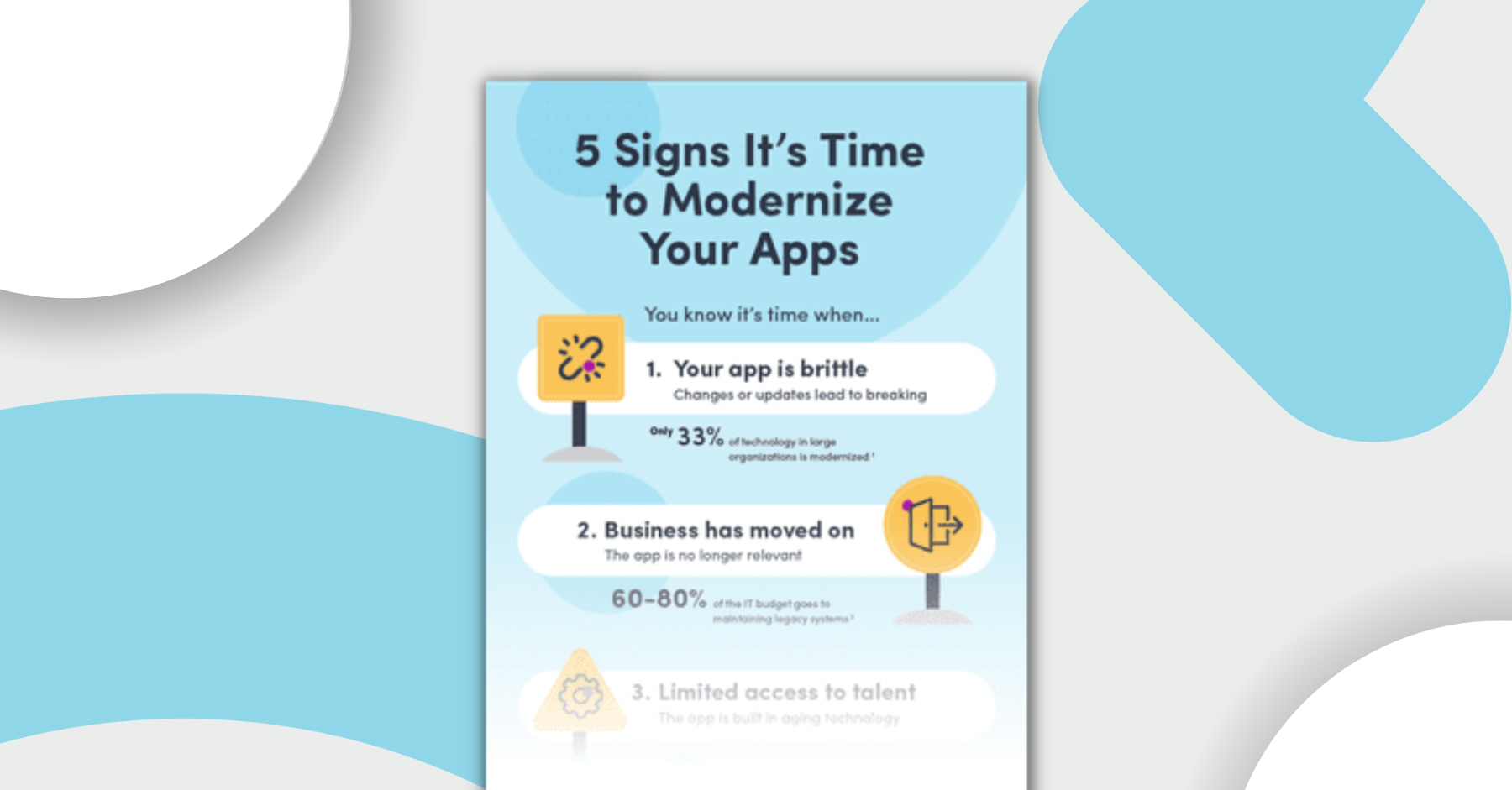Retail businesses are right on the front line of our economy. The market forces that affect businesses tend to hit the retail sector first and hit it hardest. This pressures retailers to change more quickly and more dramatically than many other businesses. That’s why right now, many retail businesses are working to modernize their software technology. And rightly so: staying with their legacy technology is hampering their success more than ever before. If your business is in the retail sector, application modernization is probably at the top of your list of concerns – and if it is not, it should be.
Why modernize now?
A host of factors are pushing retail businesses towards modernization. Some are larger economic forces, and some are responses to evolving customer needs. But they are all pushing retailers to consider how well their technology is keeping up. For most, staying with legacy technology hampers their success more than ever before.
Some of the forces affecting retailers include:
- Accelerating rate of mergers and acquisitions. Corporations are consolidating at a rate never seen before, and retail businesses are no exception. Any time companies come together, they want to integrate as quickly as possible to achieve the economies of scale and efficiencies they hope to create. This is a vital inflection point for determining where their applications are, and where they should be.
- Adoption of the “As-a-service” model. More and more, retailers are moving away from provisioning their own hardware and infrastructure. Instead, they are looking for ways to leverage their vendors as productively as possible by using more out-of-the-box services.
- Changing retail experience. COVID and its resulting surge in e-commerce has changed the retail experience both online and in bricks and mortar locations. Retailers are working hard to find strategies to respond to new customer behavior, by connecting their front line workers with solutions that will help deliver better for customers in person, virtually, and telephonically.
- Increasing need to understand customer behavior. As both customers and competitors become more sophisticated, identifying and understanding their behavior patterns becomes more valuable. Knowing where and how customers buy is crucial – and can only be achieved with better data and analysis.
With all these pressures, it’s clear that the need for a modernized technology portfolio is a key need in the retail space.
The Benefits of Modernization for Retailers
It’s true that modernization involves cost and effort. However, many businesses rightly consider it an investment and use it to realize long-term benefits to operations and the bottom line. Here are a few examples of how Quisitive has helped businesses in the retail and customer service sectors to modernize and make significant returns on their investment.
Getting Staff on—and off—the Floor
A customer-facing business was trying to staff its locations better. Over-staffing led to out-of-control costs, and under-staffing led to fewer satisfied customers. The company realized that they could improve their operations significantly by staffing their individual locations more effectively..
By moving their software to an Azure data platform, they were able to aggregate company data from multiple sources, including their ERP and inventory systems nationwide. This data enabled them to identify over- and under-performing stores based on revenue versus staff on the floor. With this knowledge, the company was able to adjust each location’s scheduling to staff it more effectively. This was only possible through modernizing their apps and moving them to the cloud, where their data could be brought together and analyzed effectively.
Building Better Customers
Converting potential customers to a loyal, repeat customer is truly the holy grail of online retailing. Quisitive worked with an online retailer to analyze their customers’ sales journey, seeking ways to influence buyers to purchase the products they want most. As part of modernizing, the company aggregated data from user searches on their online storefront and applied Machine Learning to correlate terms and analyze patterns to figure out what customers were actually searching for.
With this analysis, the retailer was able to adjust their website dynamically to predict users’ demographics and desired products, and present to them the items they were most interested in—whether the customer knew it or not. The result was a significantly enhanced customer experience and increased customer retention, which will only improve as the customer dataset continues to grow.
A Modernization Success Story
A leading automotive parts retailer did an Azure Assessment that outlined their potential for moving to the cloud. They decided to migrate their most complex application, their POS system, to the Azure Platform-as-a-Service (PaaS) model. Migrating this application to Azure would serve as an example to the rest of the organization, as well as make the migration of remaining workloads from their datacenter more seamless. But this was a big first step – not typical for a modernization approach.
Quisitive designed and deployed an Azure Landing Zone to support the organization’s environment. During this process, Quisitive evaluated the Azure Landing Zone against Microsoft’s best practices and Cloud Adoption Framework, defined any gaps in deployment, and built out as required to support anticipated workloads.
With the build-out of their Azure Landing Zone, this organization now has the proper foundation for their modernization initiatives and can benefit from the cost savings and built-in support provided by Azure PaaS services. Additionally, the migration of their most complex application has inspired the organization’s confidence in Azure, creating an easier path for modernizing the rest of the company’s application portfolio.
The Modernization Process
The idea of modernizing a company’s entire environment of applications can be daunting, even overwhelming. To address this, Quisitive developed its On-Ramp to Application Modernization (ORTAM) process to help clients work through their modernization. Broadly, the steps in ORTAM are:
- Identify applications and dependencies. A full inventory of the organization’s applications is created, and groups of applications are prioritized for modernization. For each application, its modernization need – rehost, refactor, rearchitect, rebuild, replace, or retire – is proposed.
- Evaluate the environment. Automated tools help to create a holistic view of the environment, including an understanding of the data, servers, databases, and code involved.
- Define modernization waves. The risks of application modernization are minimized by performing it in smaller groups, rather than all at once. Applications are grouped into waves based on similarities in their code bases, complexity, compliance requirements, and dependencies.
- Modernize the applications. Application architects design a modern Azure environment for the small group of applications in each wave. They develop a modernization plan and timeline for them – and then execute the plan, ensuring that appropriate controls are in place throughout.
Throughout the process, change control and communications are key to ensuring each wave of the modernization effort is a success.
Moving Forward on Modernization
Quisitive has helped retail partners realize great benefits by modernizing their applications. Unlocking the data held in siloed applications and connecting locations and data from across their enterprises have provided significant return on investment for retail businesses that have followed the modernization path.
Our experience with application modernization, with the Azure environment, and with the retail sector ensures that we can help minimize disruption, maximize effectiveness, and deliver a migration that will be cost-effective and beneficial.

;)


